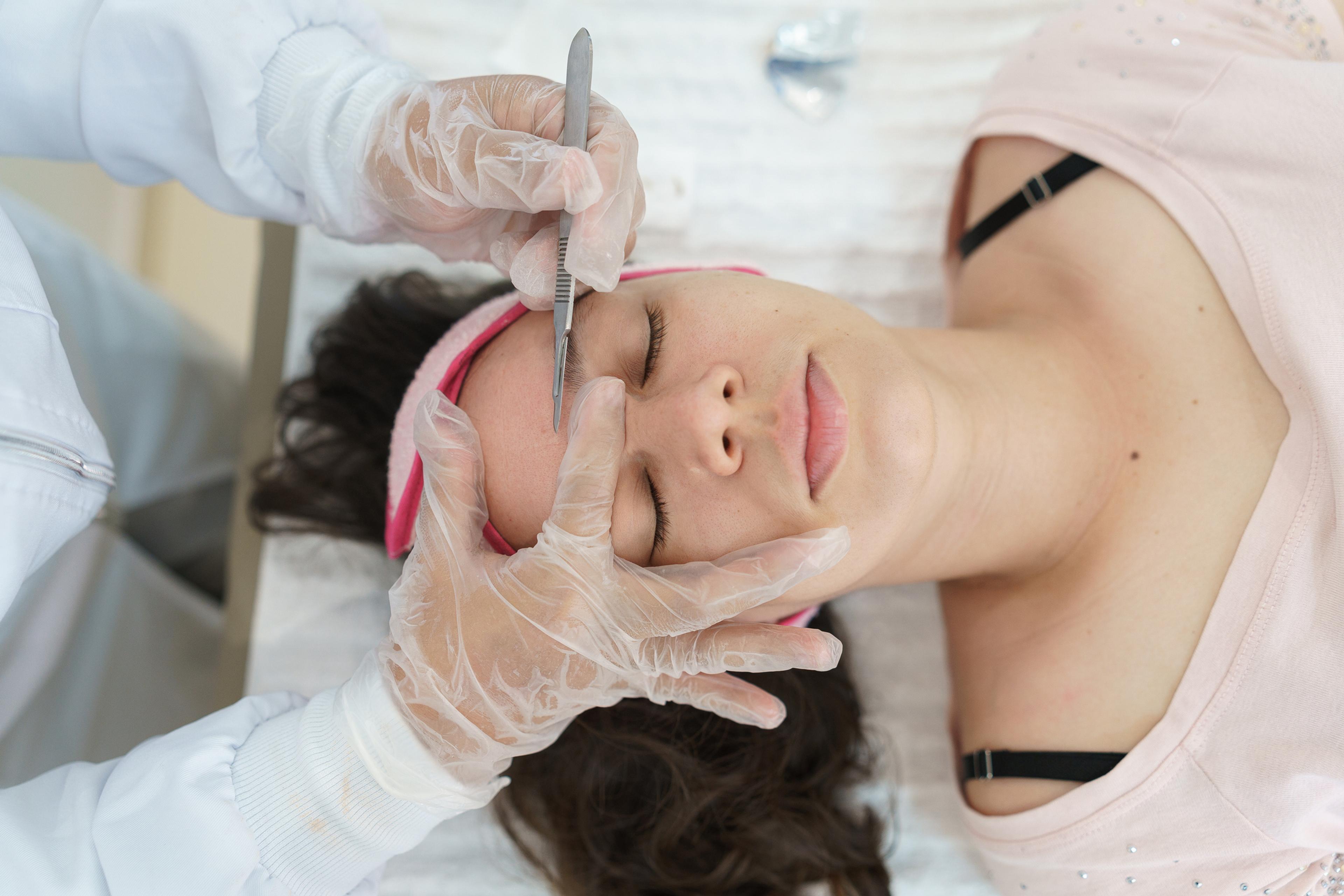What is Dermaplaning and Is It Safe for Your Skin?

Lily Mahnken
| 2 min read

Dermaplaning, or shaving your face, is all the rage on social media. It can provide you with a smooth, exfoliated face by removing dead skin cells. But besides removing unwanted peach fuzz, what exactly is dermaplaning and what does it do?
What is dermaplaning?
According to the Cleveland Clinic, dermaplaning is an at-home or in-office procedure that involves using a knife or scalpel to shave away the uppermost layer of skin on one’s face. It is minimally invasive and can reduce acne scarsand other skin imperfections.
In-office treatments include a trained esthetician or dermatologist who uses a sterile scalpel to gently remove the surface of the skin, according to the American Cosmetic Association. An in-office treatment ensures a precise and controlled dermaplane treatment.
In comparison, an at-home treatment involves purchasing a tiny straight razor and dermaplaning you own face using downward strokes and pulling the skin taught. It’s recommended to use a cleanser and toner before dermaplaning and after applying moisturizer.
What are the benefits and risks of dermaplaning?
The benefits of dermaplaning include minimizing the appearance of scars, fine lines, wrinkles and dull skin as stated by the Mayo Clinic. It also leaves the skin looking youthful and smooth. It is a temporary fix to hair removal.
Some risks however, according to John Hopkins Medicine, include redness, possible whiteheads after treatment, patchy discoloration, infection or scarring.
Is dermaplaning safe?
According to the Cleveland Clinic, dermaplaning is considered safe. It is generally recommended to schedule an in-office treatment to ensure safety and minimize side effects. However, at-home treatments are generally more affordable and accessible, leading to their increase in popularity. These treatments can have more side effects, including minor cuts or redness and, in rare cases, infection. As the Mayo Clinic states, dermaplaning isn’t the right fit for everyone, especially those with active acne breakouts, open sores, inflammation or eczema.
How do you take care of your skin after dermaplaning?
After dermaplaning, the American Cosmetic Association recommends using a gentle cleanser and applying moisturizer or serum to your face. It’s important to avoid harsh ingredients in these products, so look for ingredients such as aloe vera, glycerin or hyaluronic acid. Use sunscreen and avoid direct sunlight after dermaplaning.
Photo credit: Getty Images
Related:





